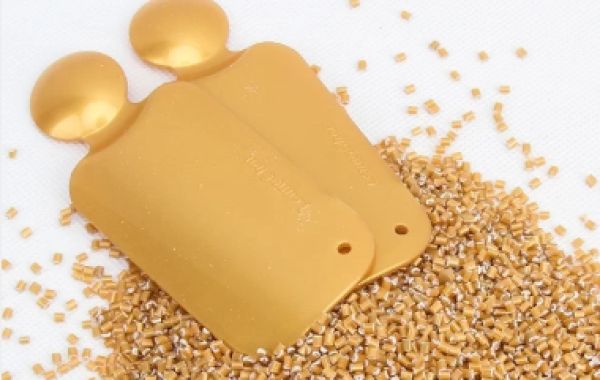Brief Introduction To Color masterbatch
Masterbatch is a new type of polymer material coloring agent this superior coloring bai performance, energy saving, dust-free, pollution-free, large-scale use in plastic, construction profiles, agricultural pipe coloring. Jin Fu Yuan pigment masterbatch is composed of super amount of chemical additives, carrier resin and dispersant. Color masterbatches are aggregates obtained by uniformly loading superconstant amounts of pigments (dyes) into the resin. Masterbatches are mainly composed of pigments, dispersants and carrier resins. The technical process of masterbatch is very strict, and the generally adopted masterbatch technology is the wet process. The masterbatch material is made by water phase grinding, trans-phase, water washing, drying and granulation, only then the quality of the product can be guaranteed. In addition pigments should be ground and treated at the same time, a series of color masterbatch technology tests should be carried out, such as the determination of the fineness of the sanding slurry, the determination of the diffusion properties of the sanding slurry, the determination of the solid content of the sanding slurry and the determination of the fineness of the color slurry and other items.
Six Benefits Of Using Color Masterbatch.
1、Make the pigment in the product have better dispersion: Color masterbatch is the aggregation made by evenly loading the extraordinary amount of pigment in the resin, and the pigment must be refined during the production of color masterbatch to improve the dispersion and coloring power of the pigment. The carrier of the special masterbatch is the same as the plastic species of the products, which has good matching, and the pigment granules can be well dispersed in the plastic products after heating and melting.
2、It is good to keep the chemical stability of pigment: if you use pigment directly, the pigment will absorb water and oxidation due to the direct contact with air during the storage and use process.
3、Ensure the stability of the color of the products: the color masterbatch particles are similar to the resin particles, so it is more convenient and accurate in measurement, and it will not stick to the container when mixing, and the mixing with resin is more even, so it can ensure the stability of the added amount, thus ensuring the stability of the color of the products.
4、Save time and raw materials. Protect the operator's health: The pigment is generally in the form of powder, which is easy to fly when adding and mixing, and will affect the operator's health after being inhaled by human body.
5、Make the pigment have better dispersion in plastic;
6、It is good to keep the chemical stability of pigment and color stability; the process is simple, easy to transfer color, save time and raw material.
Color Masterbatch Production Process
The masterbatches are mechanically processed during the production process to refine the pigments, mix the pigments with resin carriers and dispersants, so that the pigments are isolated from air and moisture, thus enhancing the weather resistance of the pigments, improving the dispersibility and coloring power of the pigments, and the color phase is bright. Since the masterbatches are similar to the resin particles, it is more convenient and accurate to measure them, and they do not stick to the container when mixing, so it saves the time of cleaning the container and the machine as well as the raw materials used for cleaning the machine. Since the pigments are in direct contact with the air during storage and use, moisture absorption, oxidation and agglomeration will occur, and direct use will cause color dots on the surface of plastic products, darken the color and make the color fade easily, and cause dust to fly when mixing, which affects the health of operators. In contrast, the masterbatches are mechanically processed during the production process to refine the pigments, mix the pigments with resin carriers and dispersants, and isolate the pigments from air and water, thus enhancing the weather resistance of the pigments, improving the dispersion and coloring power of the pigments, and brightening the color phase. Since masterbatches are similar in shape to resin particles, they are more convenient and accurate in measurement, and do not adhere to the container when mixing, thus saving the time of cleaning the container and machine as well as the raw materials used for cleaning the machine.
Masterbatches are used as industrial raw materials, and the performance is usually shown in the subsequent product applications (such as blown film or injection molding), therefore, the performance of titanium white in masterbatches is also mainly reflected in the application process of masterbatches. It is mainly reflected in the following aspects.
1)Coloring ability of titanium dioxide: determine the amount of titanium dioxide used for the same plastic product color.
2) whiteness of titanium dioxide: determines the appearance of light-colored (white) plastic products with the same titanium dioxide content.
3) the dispersion of titanium dioxide: affects the cost of production and the appearance of plastic products, gloss and other indicators.
4) Processing performance of titanium dioxide: affects the production cost of masterbatches.
5) Processing performance of titanium dioxide: strong processability.








